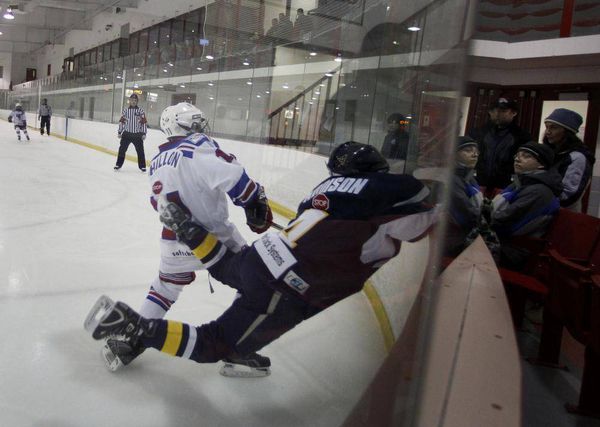Male student ice hockey players in earlier stages of puberty are at a significantly higher risk of prolonged period time of concussion symptoms than young athletes experiencing or past puberty, says Lifespan. The study was announced was published online in the Journal of Pediatrics. Concussion is one of the most common youth ice hockey injuries, accounting for 15 percent of all injuries in players ages nine to 16, and nearly 25 percent of injuries of mail high school players.
“Unlike other contact-collision scholastic sports with a high incidence of concussion, high school ice hockey lacks stratification by age grouping, largely because of prohibitive costs associated with equipment, transportation and ice time incurred with fielding varsity, junior varsity and freshman teams,” said researcher Peter Kriz, M.D. “Consequently, it’s not uncommon at the varsity level for younger, less physically mature players to oppose older players with increased strength, power and speed.”
Players who were less physically mature took an average 54 days to recover from a concussion than more physically mature players. This is 21 days or nearly 40 percent longer than older players. Lighter weight among males and heavier weight among females increased the probability that the players would experience a prolonged concussion.
The study assessed disparities in physical maturity level, age, and size among concussed adolescent ice hockey players ages 13 to 18. The research was conducted at Boston Children’s Hospital, Hasbro Children’s Hospital ,and South Shore Hospital, in Weymouth, Massachusetts.
Dr. Kriz said the findings further highlight the need for student athletes in collision sports to compete with similar-aged players and that there is risk in having younger, more talented athletes “play up” on varsity teams. The research could also impact policies regarding other collision sports which allow underclassmen to “play up” on varsity teams such as boy’s lacrosse and high school football. Kris recommends that arbitrary age and grade cutoffs should not until more studies are done to identify when physically maturity athletes are able to participate in collision sports.
“Until such studies are available, collision-sport high school athletes should play in leagues grouped by relative age,” said Kriz. “Highly-skilled, peripubertal collision sport athletes should also be discouraged from ‘playing up’ at the varsity level with post-pubertal competitors three to four years their senior.”
In accordance with American Academy of Pediatrics recommendations, Kris says youth hockey organizations should provide an option to non-check divisions for players:
In the early stages of pubertal development
Are undersized
Have significant concussion histories
Are age 13 or younger.















